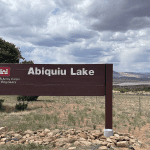- DWR announced a 5% initial water allocation for 2025.
- Last year started at 10% and increased to 40% by season’s end.
- Dry soils and potential La Niña signal a dry year ahead.
- Future allocations may improve with more rain and snow.
December 4, 2024 — California’s Department of Water Resources (DWR) announced on Monday an initial allocation of just 5% of requested water supplies for 2025 from the State Water Project (SWP). This crucial system provides water to 29 public agencies serving 27 million Californians.
A Conservative Start Amid Uncertainty.
The initial allocation is significantly lower than last year’s 10% starting point. It reflects cautious planning in the face of unpredictable weather patterns and concerns over a potentially dry year ahead.
“Based on long-range forecasts and the possibility of a La Niña year, the State Water Project is planning for a dry 2025 punctuated by extreme storms like we’ve seen in late November,” said DWR Director Karla Nemeth . “We need to prepare for any scenario, and this early in the season, we need to take a conservative approach to managing our water supply. Our wettest months of the season are still to come.”
. “We need to prepare for any scenario, and this early in the season, we need to take a conservative approach to managing our water supply. Our wettest months of the season are still to come.”
The Impact of Dry Soils.
California entered the water year with record-setting heatwaves over the summer and into early October, which dried out the landscape significantly. Dry soils can absorb much of the snowpack runoff in the spring, preventing it from reaching the state’s reservoirs. “We must account for dry soils in our State Water Project allocation planning and our runoff forecasts for the spring,” Nemeth emphasized .
.
There’s Hope.
While the initial allocation doesn’t account for the strong storms that brought above-average precipitation to Northern California in late November, these events will be considered in future updates. Allocations are updated monthly, and if rain and snowfall increase over the winter months, the forecast may improve. Last year, the initial allocation eventually rose from 10% to 40% by the end of the season.
Investments and Environmental Considerations.
DWR is investing in new technologies and data collection methods, such as the $7 million California Stream Gage Improvement Program , to enhance water management decisions. Additionally, the SWP has revised its operating permit to better manage water supplies for endangered fish species. The new Incidental Take Permit, effective November 4, covers five species protected under the California Endangered Species Act, including the Delta smelt and winter-run Chinook salmon.
, to enhance water management decisions. Additionally, the SWP has revised its operating permit to better manage water supplies for endangered fish species. The new Incidental Take Permit, effective November 4, covers five species protected under the California Endangered Species Act, including the Delta smelt and winter-run Chinook salmon.
What This Means for Californians.
A lower initial allocation signals the need for continued water conservation efforts across the state. Residents and businesses may face stricter water use guidelines as agencies adjust to the reduced supply. With the wettest months still ahead, there’s potential for the allocation to increase, offering some relief if weather conditions improve.
~~~
Image:
Drone view of the California Aqueduct via the California Department of Water Resources’ news release.





Leave a Reply